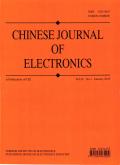Comparative Analysis of Noise Margin Between Pure SET-SET and Hybrid SET-PMOS Inverters
IF 1.6
4区 计算机科学
Q3 ENGINEERING, ELECTRICAL & ELECTRONIC
引用次数: 0
Abstract
Single-electron transistor (SET) is considered as one of the promising candidates for future electronic devices due to its advantages of low power consumption and high integration. The comparative analysis of SET-based inverters, especially the noise margin, is carried out. Pure SET-SET and hybrid SET with p type metal oxide semiconductor (SET-PMOS) inverters are designed for investigation. The effects of SET supply voltage, junction resistance and junction capacitance on noise tolerance and power consumption of inverters are studied. For hybrid SET-PMOS inverters, the noise margin for a logic high (NMH) is less than 60 mV under various conditions, which may become the bottleneck of its application. For pure SET-SET inverters, both NMH and the noise margin for a logic low (NML) could reach 300 mV at a supply voltage of 0.8 V. The minimum power consumption of pure SET-SET and hybrid SET-PMOS inverters is 2.85 nW and 58 nW, respectively. The pure SET-SET inverters have greater noise tolerance and lower power consumption, which is more conducive to large-scale integration. When junction capacitance纯SET-SET与混合SET-PMOS逆变器噪声裕度的比较分析
单电子晶体管(SET)以其低功耗和高集成度的优点被认为是未来电子器件中很有前途的候选器件之一。对比分析了基于set的逆变器,特别是噪声裕度。纯SET-SET和混合SET与p型金属氧化物半导体(SET- pmos)逆变器设计用于研究。研究了SET电源电压、结电阻和结电容对逆变器噪声容限和功耗的影响。对于混合式SET-PMOS逆变器,在各种条件下,其逻辑高电平(NMH)的噪声裕度小于60 mV,这可能成为其应用的瓶颈。对于纯SET-SET逆变器,在0.8 V的电源电压下,NMH和逻辑低电平(NML)的噪声裕度都可以达到300 mV。纯SET-SET和混合SET-PMOS逆变器的最小功耗分别为2.85 nW和58 nW。纯SET-SET逆变器具有更大的噪声容限和更低的功耗,更有利于大规模集成。当电源电压为0.8 V时,SET-SET逆变器的结电容$C_{\mathrm{J}}=0.0273\ \text{aF}$和结电阻$R_{\mathrm{T}}\geq 1\ \mathrm{M}\Omega$对NMH和NML的影响不显著,噪声裕度在300 mV上下波动。
本文章由计算机程序翻译,如有差异,请以英文原文为准。
求助全文
约1分钟内获得全文
求助全文
来源期刊

Chinese Journal of Electronics
工程技术-工程:电子与电气
CiteScore
3.70
自引率
16.70%
发文量
342
审稿时长
12.0 months
期刊介绍:
CJE focuses on the emerging fields of electronics, publishing innovative and transformative research papers. Most of the papers published in CJE are from universities and research institutes, presenting their innovative research results. Both theoretical and practical contributions are encouraged, and original research papers reporting novel solutions to the hot topics in electronics are strongly recommended.
 求助内容:
求助内容: 应助结果提醒方式:
应助结果提醒方式:


